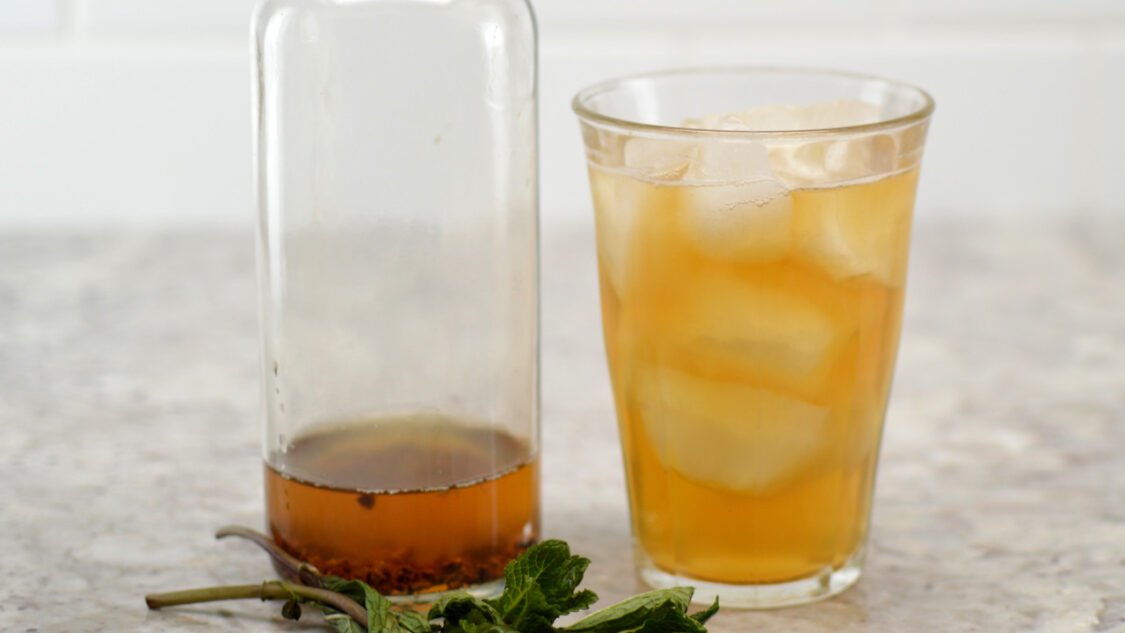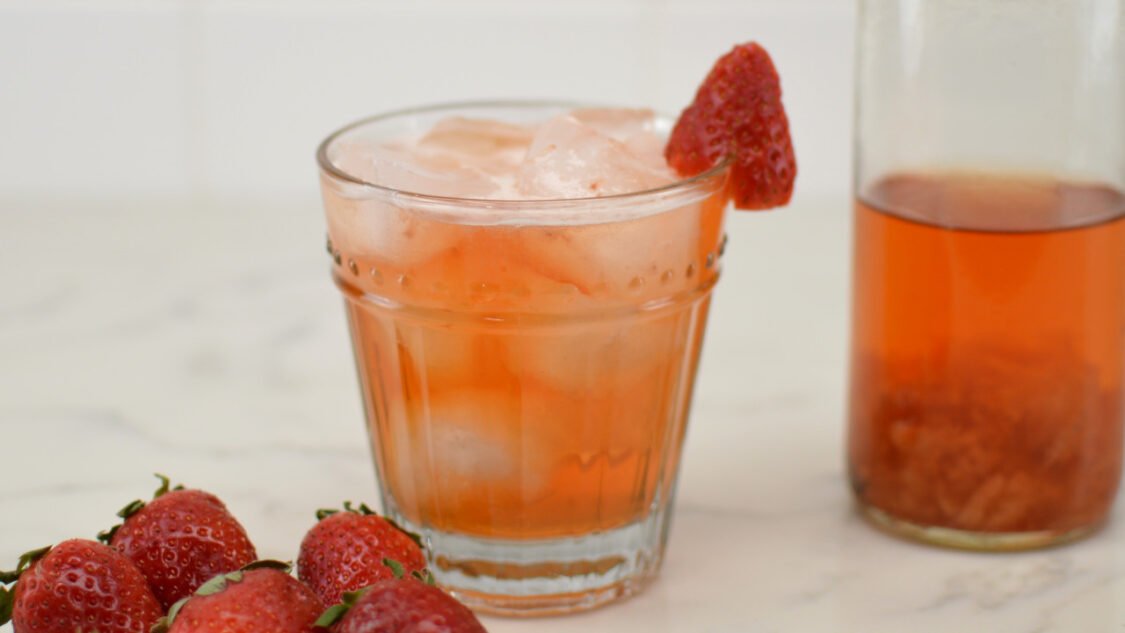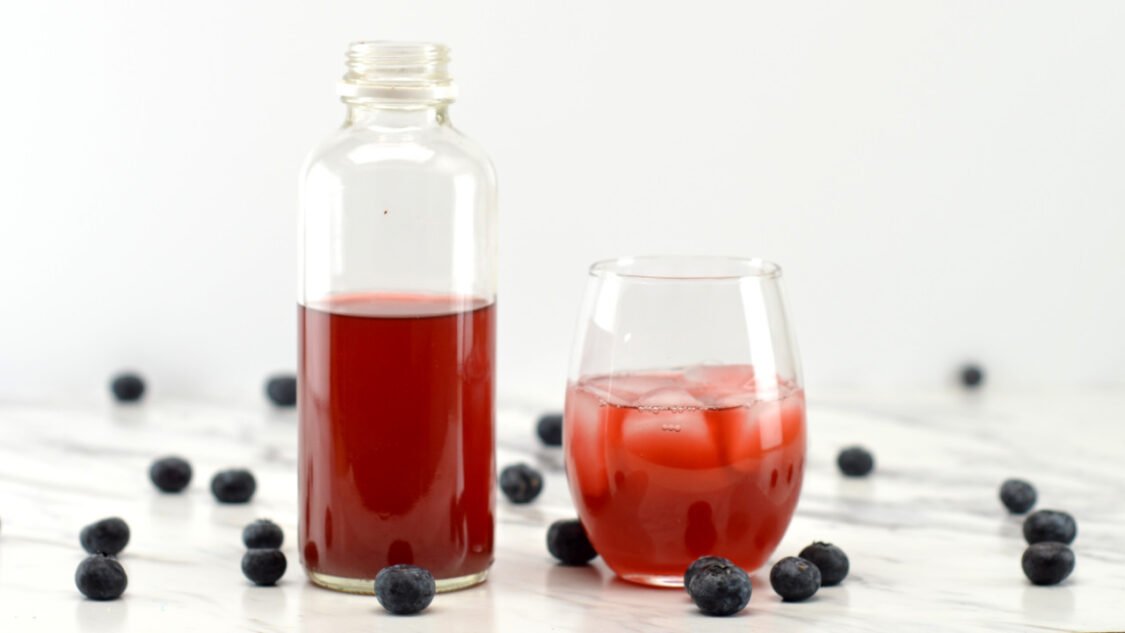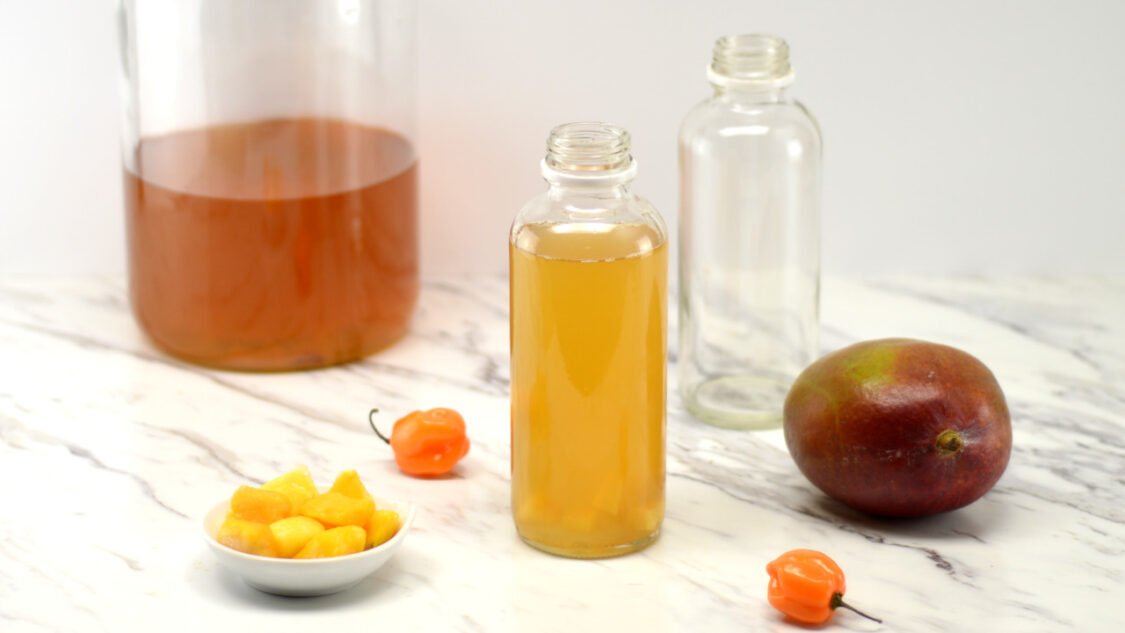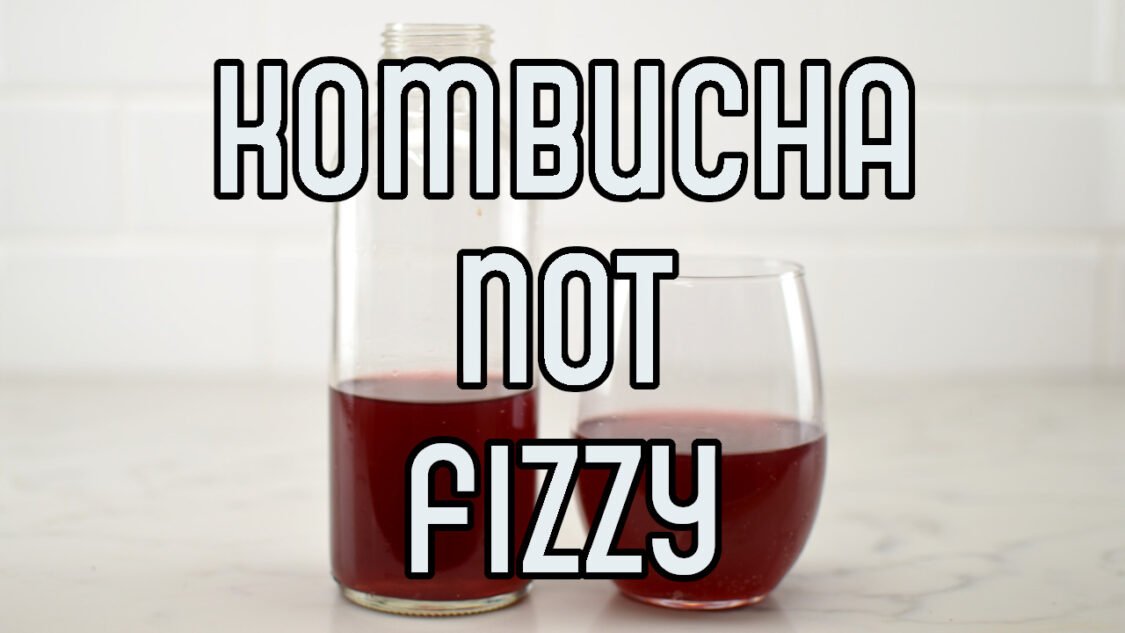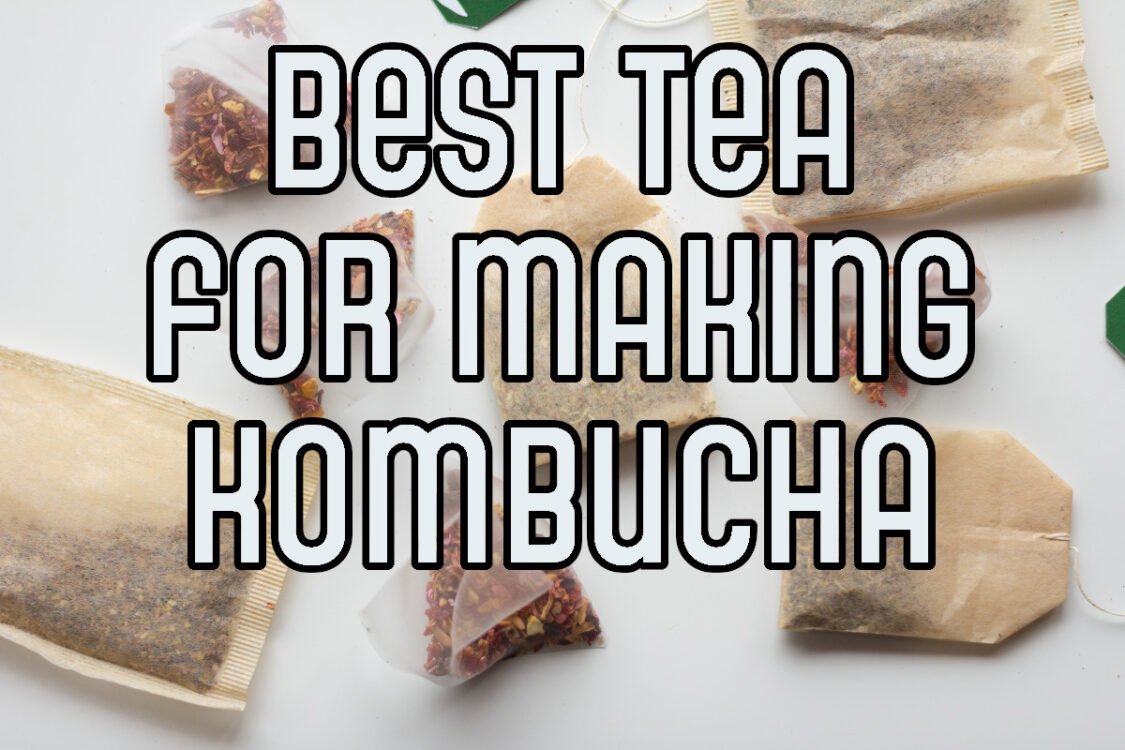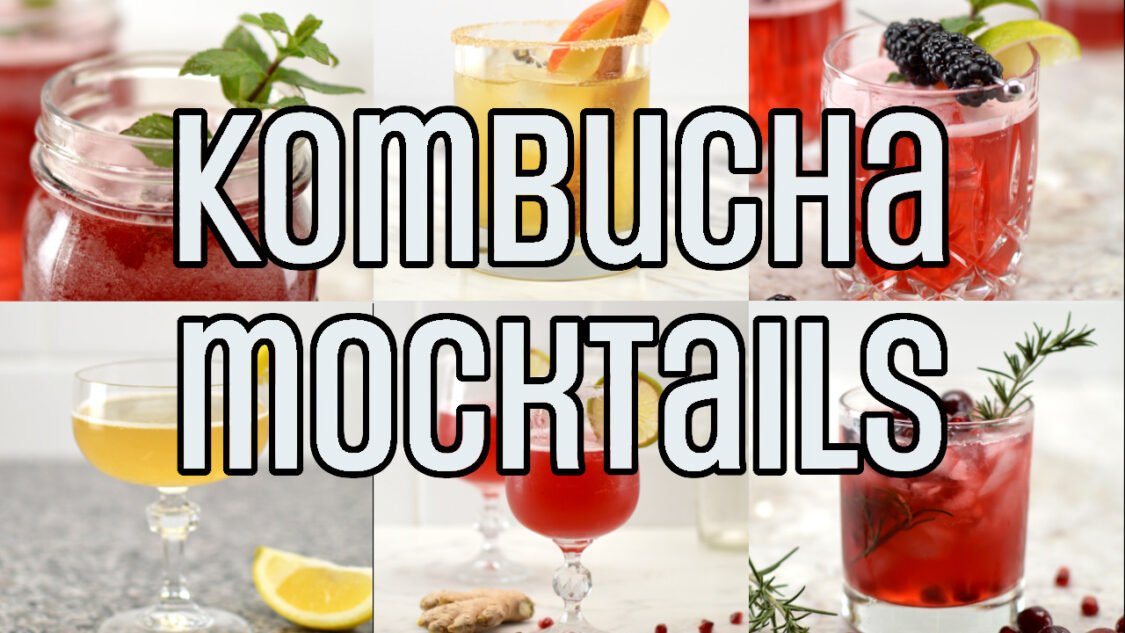Kicking Ginger Kombucha
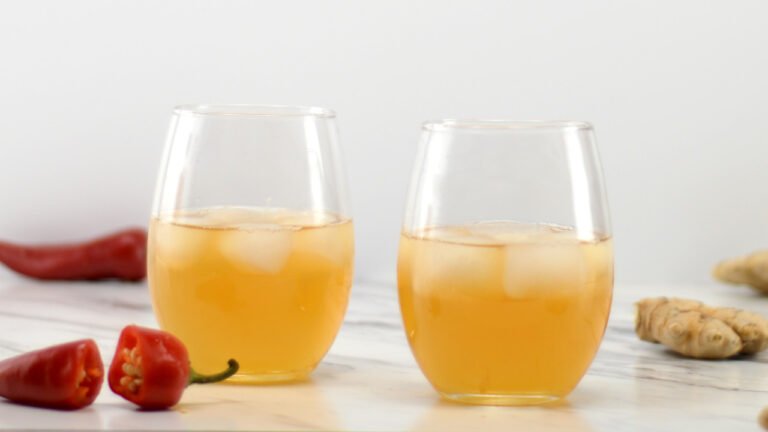
This kicking ginger kombucha recipe layers the sweet, peppery and pungent flavors of fresh or frozen ginger with fresh chili peppers. This combination creates a complex aroma of the ginger and the chili pepper. The first sip is sweet and complex with rich ginger flavors with a hint o heat at the back of your throat after swallowing.
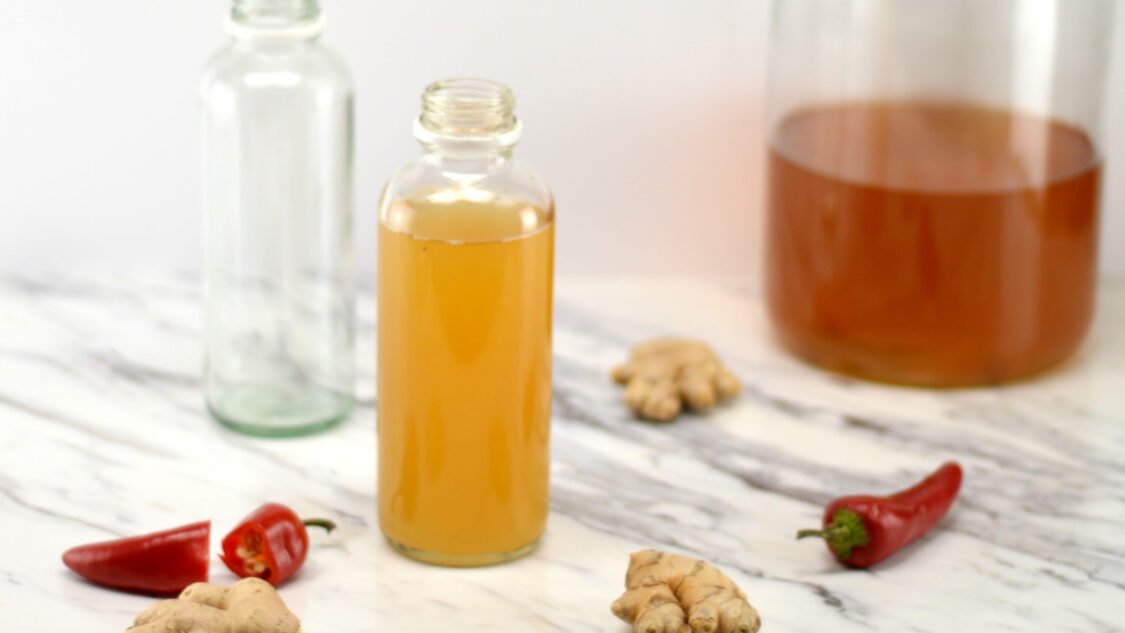
Kombucha Fermentation Overview
There are two fermentation phases when making kombucha:
1. Primary Fermentation: This is when you transform sweet tea into tart and tasty kombucha. Get all the details at how to make kombucha.
2. Secondary Fermentation: This is when you carbonate the kombucha by adding flavor and sugars (like ginger and chili peppers ?️) and bottling it.
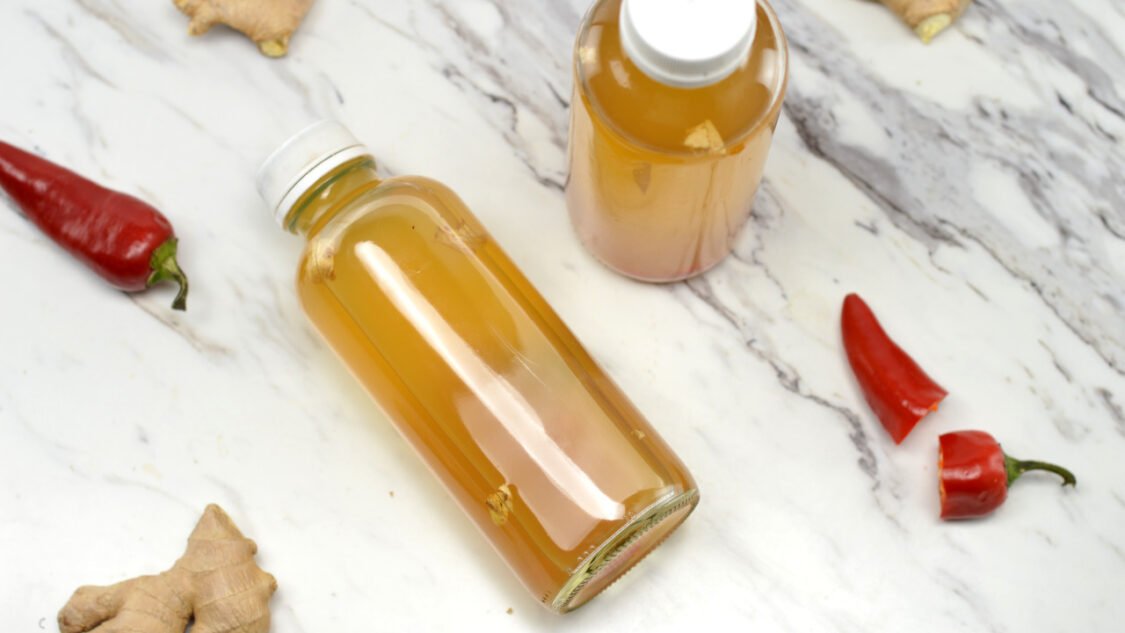
Preparing for Secondary Fermentation
This recipe makes about 7 x 16 fluid ounce bottles of finished kombucha (from a 1-gallon batch of unflavored homemade kombucha aka from your primary fermentation).
Reserve 2 cups (about 16 oz / 0.47L) kombucha and your SCOBY from your completed primary fermentation and set aside – you will use this as your starter for your next gallon batch of kombucha.
With your kombucha starter tea and SCOBY placed aside, you now have enough kombucha left to flavor and fill your bottles. This guide assumes are using 16 oz. glass bottles which are a popular choice for kombucha; however, there are many options for bottling kombucha.
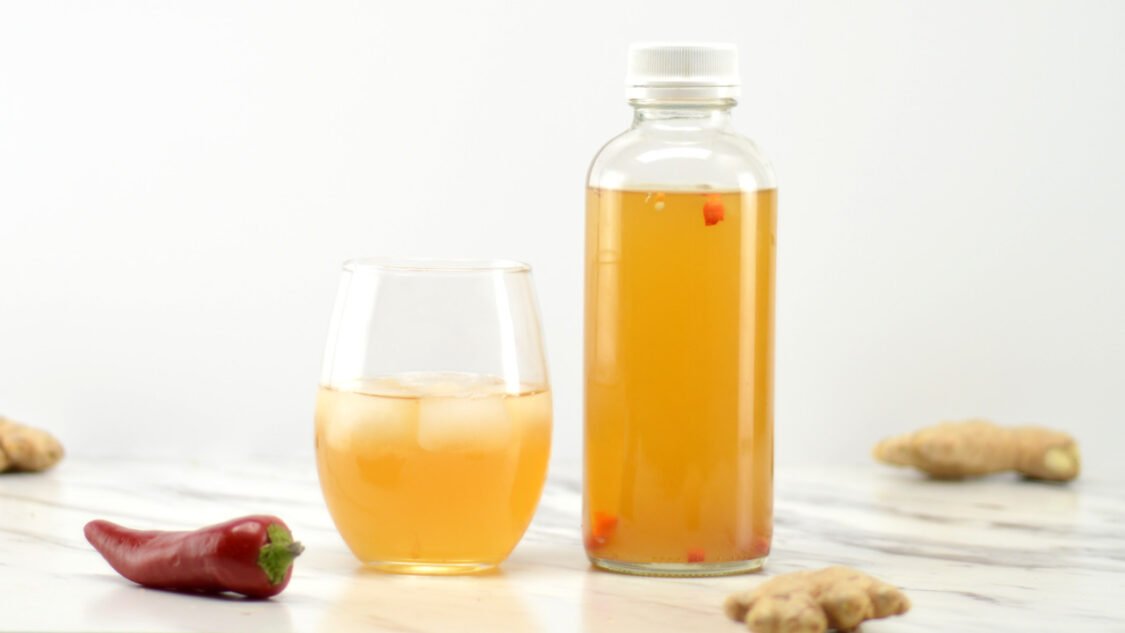
Ingredients to make Kicking Ginger Kombucha
Kombucha: Finished kombucha from your first fermentation is the base to which you will add the ginger and chili pepper.
Ginger: Ginger is an aromatic herb that pairs well with both sweet and savory foods. It has legendary health properties, primary of which is that it’s great at calming an upset stomach with anti-inflammatory properties, so it’s great for sore muscles and aches and pains. In addition, it can help to manage blood sugar, cholesterol, and even might positively impact brain health.
Fresh ginger has slightly peppery and sweet taste, with a pungent and spicy aroma.
Look for firm ginger “hands” with a taut peel. It should not look wrinkled or feel soft. To use, peel the taupe skin off, then slice, chop, or grate. Frozen ginger is typically available in pre-portioned packets that of one teaspoon nuggets. Frozen ginger is a little less intense than fresh ginger and is a really useful keep on hand in for use in short notice. Ground ginger is not as strongly flavored but has a similar warm bite and a touch of sweetness. Fresh or frozen ginger works best in kombucha
Like garlic, ginger mellows when cooked and will become bitter when burned. The exception is that ginger becomes even more spicy when boiled in a syrup. For more info on that check out how to make great mocktails
Chili peppers: Chili pepper are technically fruits; however, chili peppers don’t bring the sweet, juicy flavors one expects from summer fruit. Chilies can present a wide variety of flavors and levels of heat. The heat of chili peppers is measured in Scoville units ranging from 0 (bell peppers) to 25,000 (jalapenos) to 2,000,000 (Carolina reaper).
For this recipe I used Fresno peppers which are like jalapeno peppers, but a bit spicier, and sweeter. They are glossy, firm, and medium thickness in flesh. I find they bring just the right amount of flavor and heat to kombucha and are easy to find.
Sugar: A touch of additional sugar for bacteria and yeast to feed on which creates carbonation (aka fizzy goodness.) When filling 16 ounce bottles I’ve found a sugar cube has the right amount of sugar (1/2 tsp) for carbonation and is a convenient way to add the right amount without the mess.
How to make Kicking Ginger Kombucha
Add Flavors: Add chopped ginger and chili pepper to each bottle.
Bottle: Transfer kombucha to fermentation bottles.
Condition: For 3 to 10 days, until it reaches the carbonation level you like.
Enjoy: Chill in the fridge before serving.
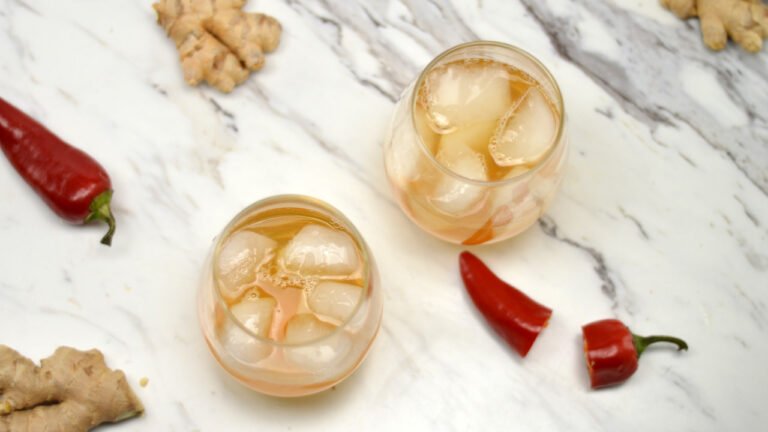
Kicking Ginger Kombucha Recipe
Yield: 7 bottles • Active time: 20 minutes • Total time: 3 -10 days
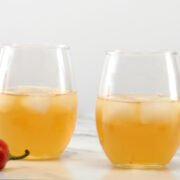
This recipe assumes you are doing a secondary fermentation (flavoring and carbonation) in the bottle. You may also incorporate a third fermentation using the same proportions but following the third fermentation steps.
Ingredients:
1-gallon homemade kombucha from a first fermentation, 1.9 L
2 Tbs fresh ginger, finely chopped or grated (about 2 knobs) 12 g
2 Tbs chopped chili pepper, depending on heat and flavor preference you can use any variety you like (I used tabasco peppers) 12 g
7 sugar cubes or 2 Tbs sugar 12 g
Instructions:
Prepare ginger and chili: Clean and finely chop or grate ginger. Coarsely chop chili pepper first removing membranes and seeds if you find them too hot.
Flavor: Evenly divide ginger and chili pepper among the bottles.
Sweeten: Add sugar cube or 1 tsp sugar to each bottle to provide the SCOBY another food source to create carbonation.
Fill bottles: Transfer kombucha into fermentation bottles, leaving about 1 inch empty space at the top.
Cap: Cap the filled bottles and tighten the cap snugly.
Ferment: Place in a dark, room temperature area for 3 to 10 days, until it reaches the carbonation level you like. This process will go faster in warmer climates, and slower in cooler climates.
Enjoy: Chill in the fridge before serving. Homemade Kombucha can be stored in the fridge, tightly sealed, for several weeks. If desired, you can strain the kombucha as you serve it into glasses to remove the ginger and chili pepper
Tips & Tricks:
Make sweet tea for your next batch the night before you flavor and bottling and let it cool on the stove overnight so that you can flavor your kombucha and get your next batch started at the same time.
If this is your first time brewing, it may be helpful to use a plastic water bottle as a gauge. Fill a recyclable plastic bottle with kombucha (leaving 1.5 inches empty at the top). When this bottle becomes rock hard, you’ll know the glass bottles are also ready. This will help you gauge how long it take for kombucha to carbonate your climate and will prevent bottle explosions.
Nutrition Information:
Kombucha Recipes You Might Also Like
Helping you learn to brew kombucha, find inspiration for new kombucha flavors and use kombucha to make kombucha mocktails


